So, I have collected all my loose parts. Now what? What can my child do with loose parts and how do I set them up? Here is a list of 10 engaging and creative ways to use loose parts with your children. I have tried all of these activities either at home with my daughter or in classrooms so this post is for my fellow teachers as well!
1. Transient Art
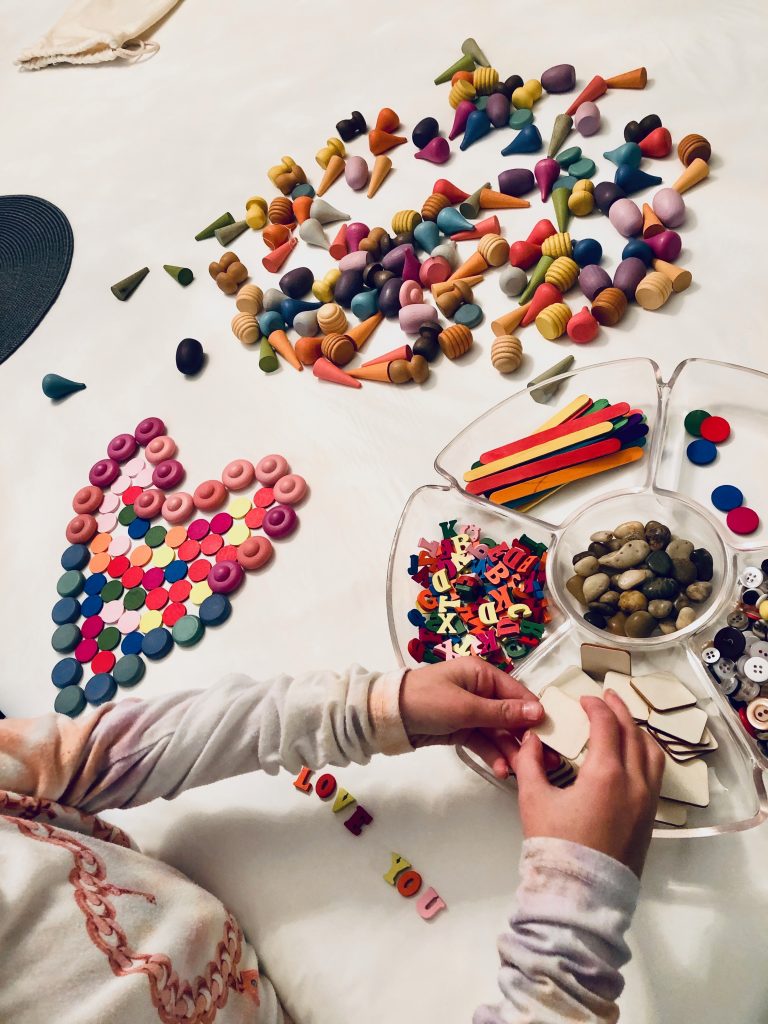
Transient art is the creative experience of placing open-ended pieces together on a surface. Transient art allows children to create in a very soothing and calming way. There are no rules and nothing is set in stone. No glue is used so pieces can be used over and over again. Transient art allows children to explore shape, pattern, colour and texture. Simply provide a clean working space and a variety of loose parts.
2. Mandalas
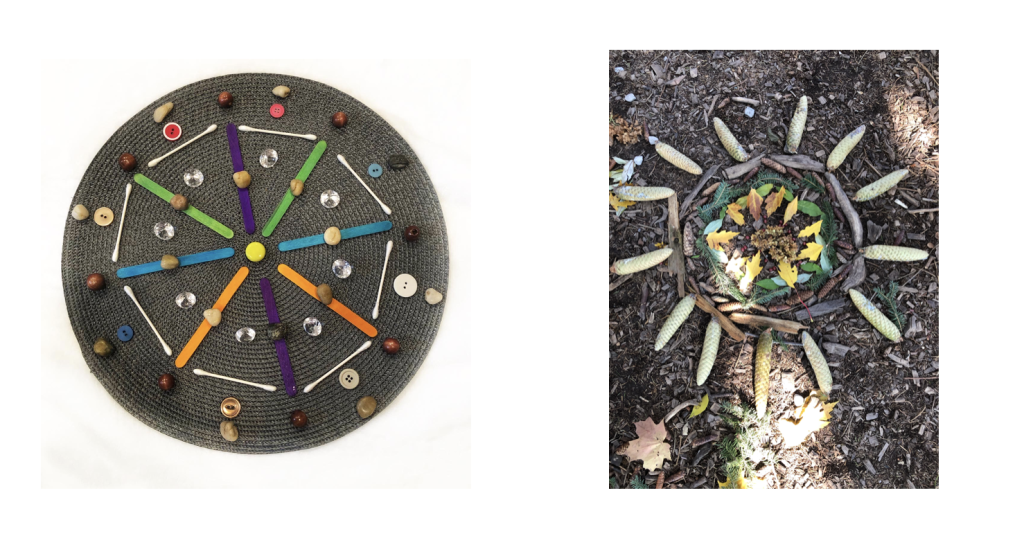
A mandala is a circular structure that is symmetrical in nature and radiates outwards from the centre. You can find mandalas in flowers, tree rings, seashells, fruit and more. Creating mandalas is a very calming and tranquil art activity that allows children the freedom to design and express themselves. It reduces stress and anxiety, allows children to think spatially and gain knowledge about geometric forms. You can create mandalas outside using natural elements or in-doors using loose parts like buttons, pompoms, gems, q-tips and wooden pieces. To introduce this activity, find something round to create on like a placemat, coaster or wood cookie. Using a black surface really makes the colours pop. Put out your loose parts in a shallow tray and let your child create starting from the middle of the surface and working outwards.
3. Building
Loose Parts are great for building! Need something fun to do on a Saturday morning? Before you go to bed, put the contents of your recycling bin on the floor in your playroom or living room. When your children wake up the next morning and see all of the materials lying out for them, challenge them to build something like a sturdy structure or the tallest tower.
4. Self-Portraits
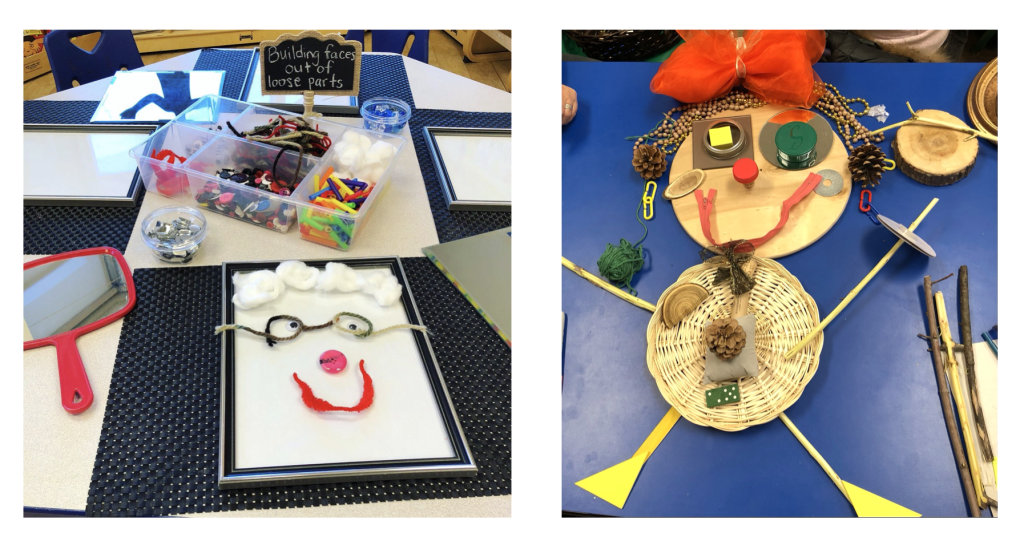
Let your children make self-portraits using loose parts. Make sure you have a mirror and a clean, flat surface to work on. Give your children a variety of loose parts that could be used for hair, eyes, a nose, ears, etc. For younger children, I like to put out a round coaster or placemat to represent a face and invite them to add their features.
5. Counting, Sorting & Patterning
Loose Parts make excellent math manipulatives and are very cost effective (often free). Use leaves, pinecones and stones for counting, representing the value of numbers, practicing one-to-one correspondence and making different patterns. Depending on the level of the child, the activities can be made simpler or more complex. For example, one activity may include counting 10 buttons or tracing the number 10 using buttons. To add another layer to this activity, your child may represent the number 10 in different ways using loose parts. Children also love grouping things together and creating different patterns. Using interesting loose parts makes the activity more exciting and engaging.
6. Sensory Bins
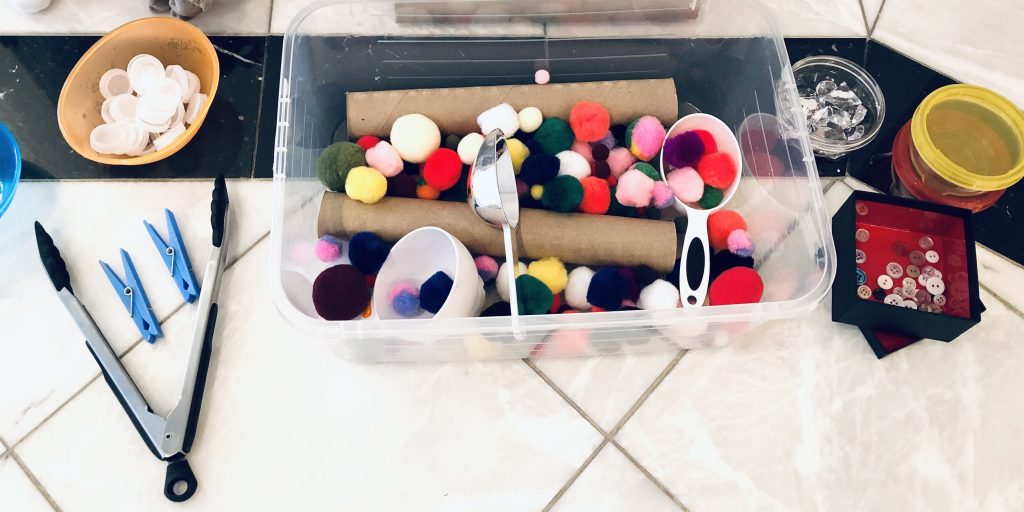
There are many loose parts that can be used as great fillers for sensory bins like buttons, gems, stones and pompoms. Objects like measuring cups, bowls and spoons are excellent tools for dumping, scooping and pouring. Loose parts add texture, sound and smell to sensory bins. To read more about creating sensory bins, click here.
7. Treasure Baskets
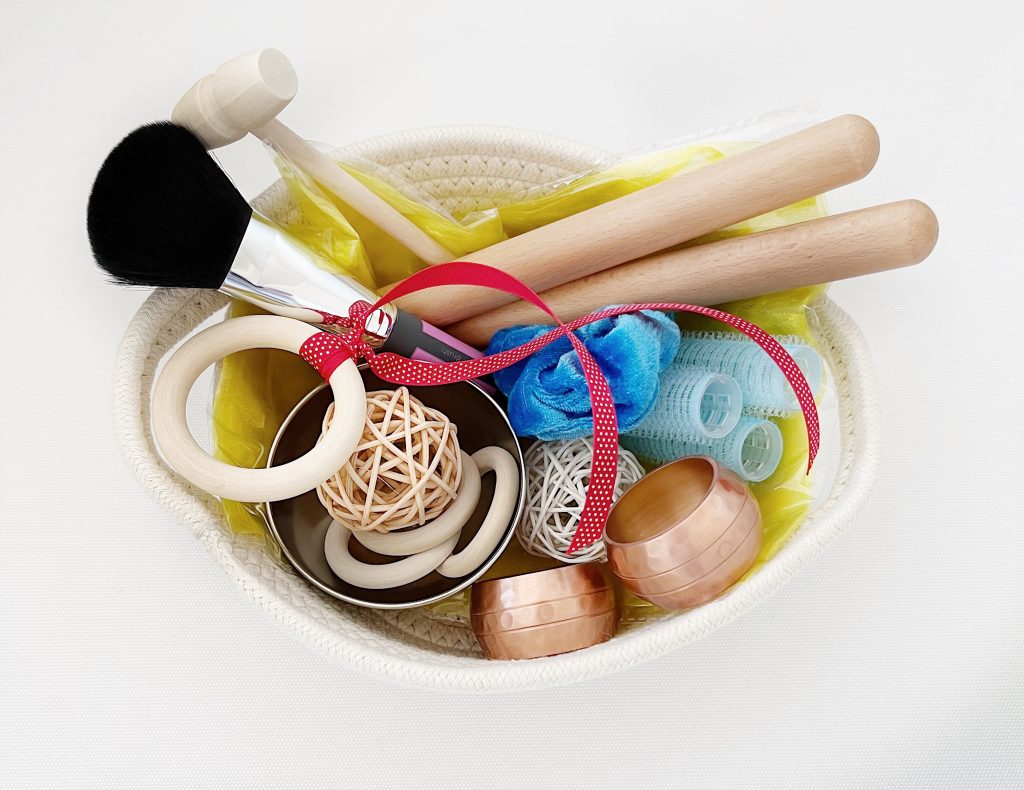
Add your loose parts to a shallow basket and let your child play. A treasure basket is a shallow basket with a variety of different natural, household items that can be taken in and out. It is an opportunity to explore everyday items while feeding that urge to grasp things, move things and figure them out. You may wish to add items like wooden spoons, shells, shakers, bangles, blocks, ribbons and pinecones to your basket. To read more about treasure baskets, click here.
8. Role playing
The opportunities for role playing and dramatic play are endless with loose parts because they are so open-ended, versatile and appealing. Giving children boxes, scarves, fabrics, blocks and containers sparks creativity and allows for rich and meaningful storytelling. Boxes may be used as caves or rocket ships. Scarves and fabrics may be used to make costumes. Wood cookies may be telephones or telescopes. What I always find so fascinating is that children will use loose parts for dramatic play in ways you would never think of!
9. Stacking
Babies love to stack! You probably have loose parts in your home that would make a great stacking game for your baby. Try using large loose parts and smaller loose parts making the experience more challenging. Babies will use their problem solving skills, hand-eye coordination and fine motor skills to stack those loose parts without them toppling over. Example of fun loose parts to stack are things like tin cans, boxes, tree cookies or wooden spools.
10. Pre-Writing and Letter Formation
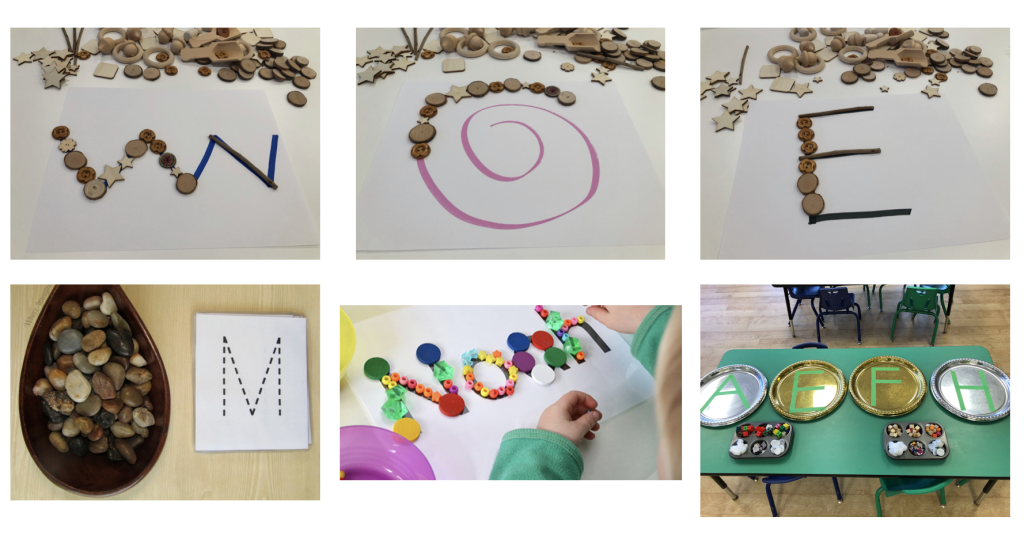
Loose parts can be used for many literacy activities and are excellent for letter recognition, pre-writing skills and letter formation. For example, before children can learn how to write, they need to understand the concept of straight and curvy lines. With painters tape or a marker, draw different straight and curvy lines or shapes. Have your child use loose parts to trace the lines. This allows them to recognize the difference between straight lines and curvy lines. Next, you can use painters tape on your floor and make different letters. Once again, your child can use the loose parts to trace the letters. This is a simple and great activity that practices letter formation and letter recognition.
Displaying Loose Parts for Play
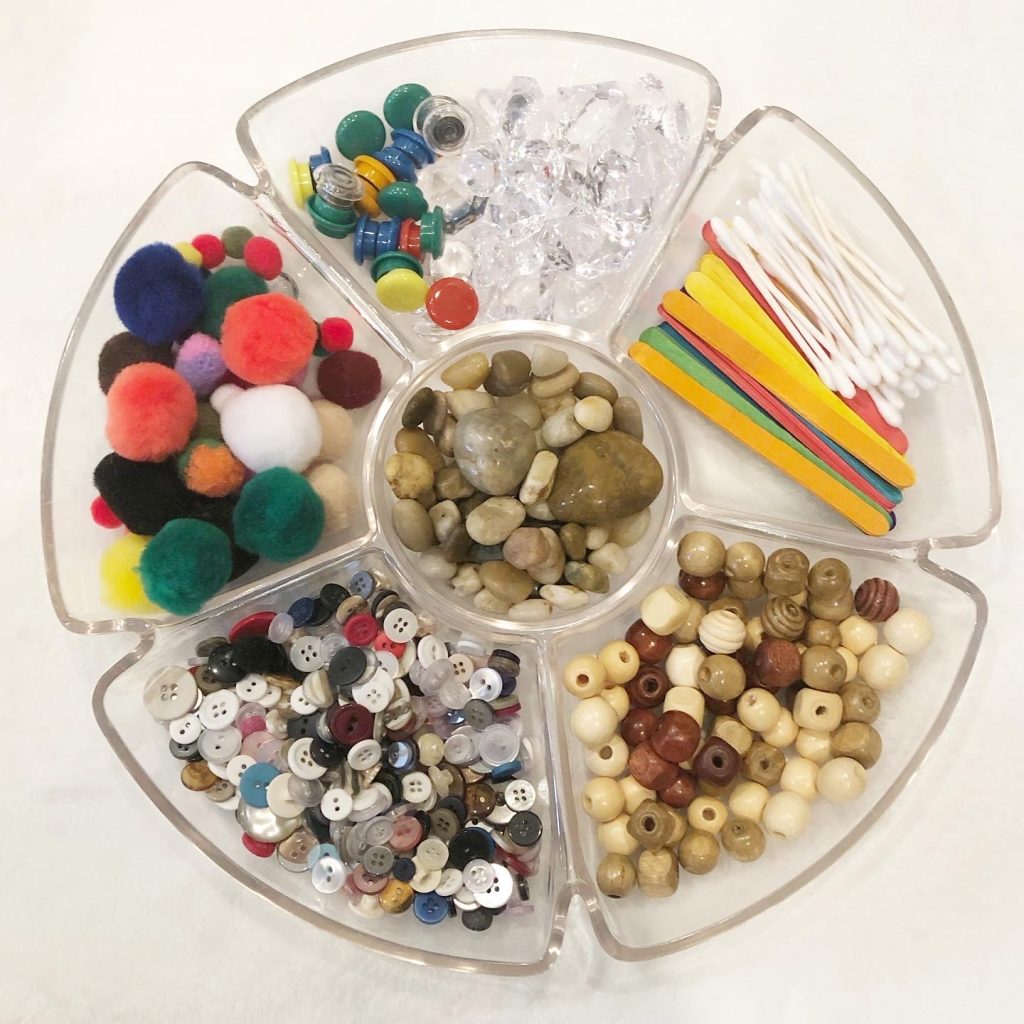
Setting loose parts out in a tray or shallow dish entices children to get started. I like using dip trays, cutlery organizers or anything shallow with different sections. You want to create a defined space to use the materials that is free of clutter. To start, put out a small blanket or clear off a table and introduce your child to a limited collection of loose parts so the experience isn’t too overwhelming or over-stimulating. You can also set up loose parts in a way that may help spark creativity. For example, you may wish to build a structure out of some blocks or magnetic tiles in the centre of the room or start a design on a flat surface and encourage your child to complete it.
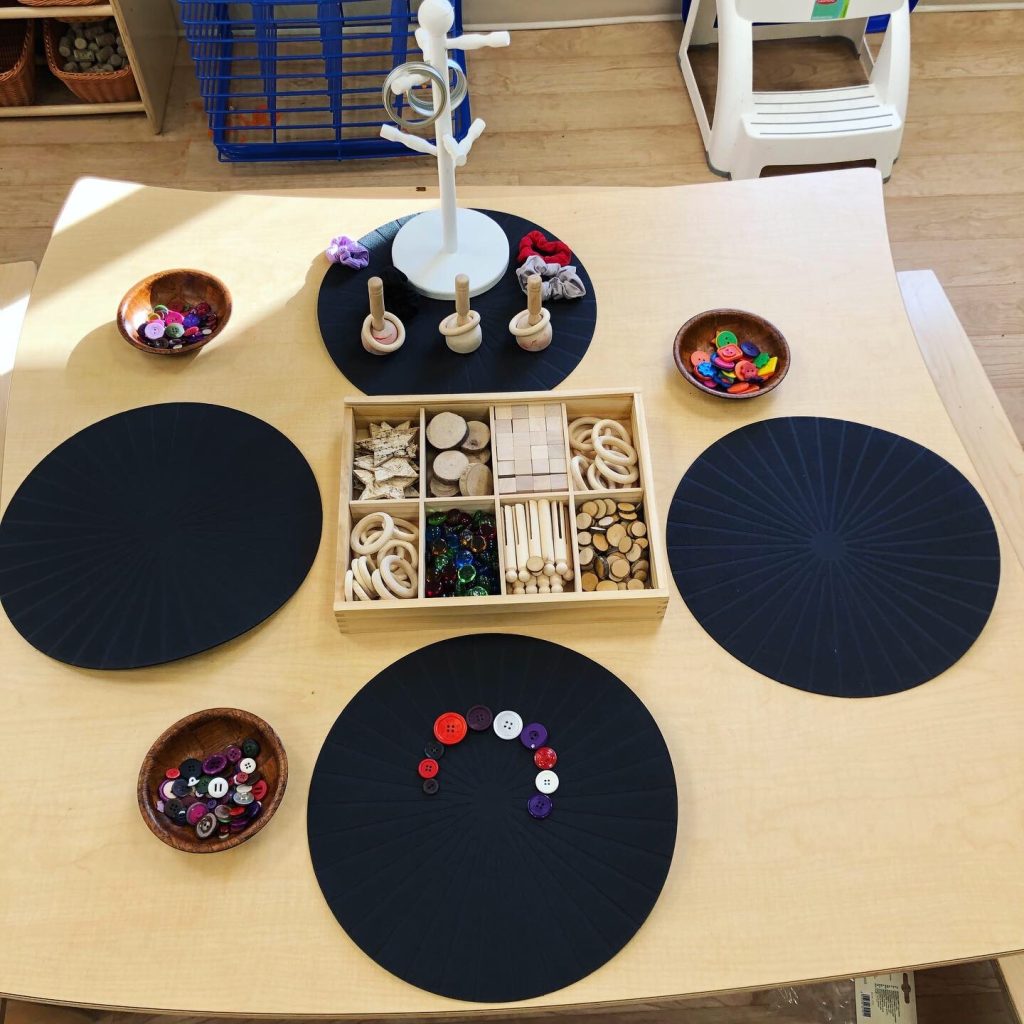
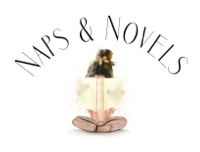
Leave A Reply